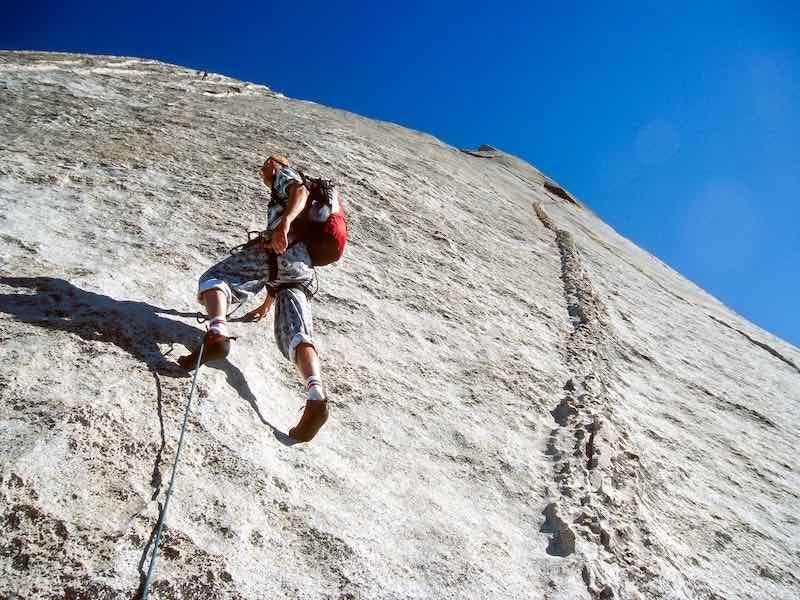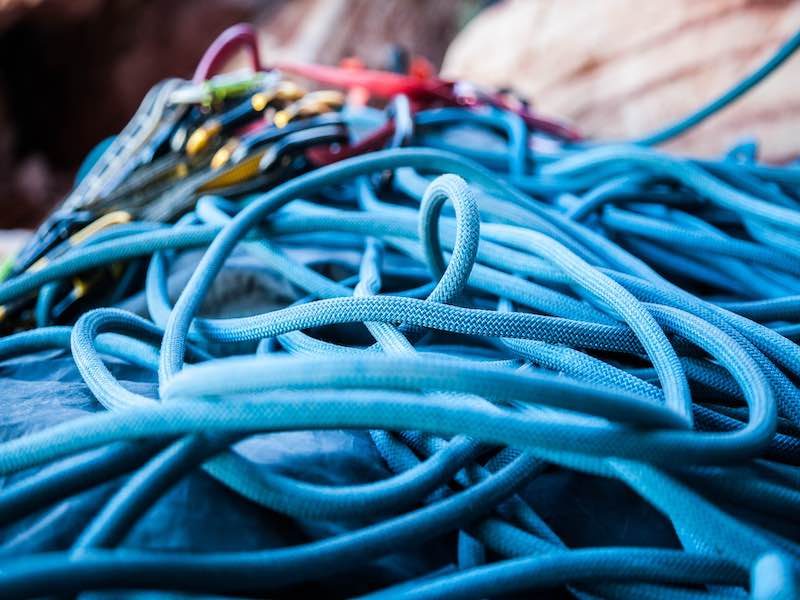Have you gotten hooked on climbing in the gym and now feel that you’re ready to take your skills outdoors? Believe me—I know how you feel! Climbing is addictive, and once you start bouldering and climbing outdoors, the sport takes on a whole new meaning. It’s a great way to spend time in nature, meet new people, and it can sometimes even be therapeutic.
However climbing outdoors is a bit more complicated than just climbing in your local gym or your home gym. There are safety and logistical risks involved, so it requires quite a bit more planning and preparation. To make it easy for you, I’ve listed everything you need to know to transition into outdoor nature climbing around the world!

15 Useful Tips to move from gym climbing to outdoor climbing
1. Make sure you have the correct gear
One of the most important steps in transitioning from gym climbing to outdoor climbing is making sure that you have the correct rock climbing gear. Gyms often can provide climbers with harnesses, shoes, and ropes, but when you head outdoors, you’re all on your own. Be sure to have a rope, harness, helmet, quickdraws, locking carabineer, personal anchor system, climbing shoes, chalk.

2. Learn the proper safety techniques
When you’re in the gym, you don’t have to worry about setting and cleaning routes—the quickdraws are already there! However, when you climb outdoors, you must set up and take down a route every time you want to climb it. It is important to learn the proper techniques to climbing outdoors, which brings me to my next tip…
3. Take a rock climbing class or course
Many climbing gyms offer classes that teach you the basics of climbing outdoors or climbing techniques to strengthen your body for climbing. They can teach you how to make a sport climbing anchor, set up a toprope, and safely clean a route. This can take away any stress that you may feel your first time climbing outdoors. However, if your climbing gym doesn’t offer this sort of courses or certification, another option is listed in my next tip!
4. Bring a climbing buddy
If you’re new to outdoor climbing, it might be a good idea to bring a friend who already has some experience to show you the ropes. That way, you don’t have to stress about if you’re doing things incorrectly, as you’ll have someone there to lend you a hand (and check your knot).

5. Research climbing areas and destinations
Now that you’ve decided to climb outdoors, it’s time to decide where is your next rock climbing destination! Are you going on a trip? Or just heading to your local crag? Wherever you’re planning on going, it’s important to do some research before setting out. Knowing exactly how to get to the crag and what types of routes there are is key. You should also be aware of how many quickdraws/what length of rope you need for where you want to climb. My next tip can help you find that information!
6. Buy a climbing guidebook
Most climbing areas, especially if they’re relatively popular, sell a guidebook, which tells you what types of routes each crag has, along with detailed information on how to get to the climbs. Having a guidebook can be extremely helpful, especially as a beginner, as you wouldn’t want to get on a crazy hard climb your first day out! If you can’t get a guidebook, 27 Crags has useful information about climbing areas all over the world.
7. Check the weather forecast
This one is very important, as climbing is such a weather-dependent sport. Climbing in the rain is an absolute no-no, as it is very dangerous and, in some areas, can even damage the rock. In addition, some crags even take a few days to dry out after a storm, so you should also pay attention to how the weather has been the days leading up to your climbing outing.

8. Pack the right fuel and food rations
For me there’s nothing worse than coming down from a climb hungry and having nothing to eat! That’s why I’m always sure to pack snacks, because when I head out climbing for the day, I’m usually gone from breakfast to dinnertime. I don’t like to eat huge meals between climbs, so I usually eat things like fruit, nuts, and granola bars. They don’t take up a lot of space, and they’re a great healthy source of energy! Also be sure to bring plenty of water—the last thing that you want on your fun day out climbing is to end up dehydrated!
9. Bring extra clothes/ protection for change in weather
Weather can be unpredictable, so always bring an extra jacket or sweatshirt (unless you’re climbing in July, of course). Even when it’s nice out, the area where you’re climbing or belaying could be in the shade, so you might end up being a bit chilly if you’re not properly prepared. On the flipside, pack some sunscreen or a hat on warmer days—you definitely don’t want to finish the day with sunburn.

Best to also invest in good waterproof bags and shoes in the event you get caught in rain/ showers and want to keep your rock climbing equipment/ gadgets nice and dry.
Experiencing Bad Weather? Well, keep up your training/ momentum by bringing along a portable hangboard on your climbing trips!
10. Set goals and route projects
Climbing is an innately goal-oriented sport, and that becomes even more apparent when you climb outside! It’s a great idea to set goals that you want to achieve, such as grades that you want to climb, but don’t put to much pressure on yourself—keep in mind that it’s just for fun!

11. But keep your expectations realistic
You’re not going to send the hardest route on your first day climbing outdoors, so don’t expect to! It’s most important to start climbing with realistic expectations so that you’re not disappointed (and you don’t put yourself or others in danger). Your first few times out, try to focus on feeling comfortable and relaxed while climbing, and the rest will fall into place.
12. Love the environment and leave no trace behind
The rock is not there for us to disrespect. It’s important to remember that other people will be climbing on the same routes as you, so be sure to brush holds and not leave any trash at the climbing area. And if you happen bring your dog, be sure to clean up after it as well.

13. Respect nature and build a sustainable future
Be wary not to disrupt the ecosystems of climbing areas—stay on designated walking paths, and try not to destroy any vegetation. And if you have to go to the bathroom, you should properly bury it or carry it out with you.
14. And respect fellow climbers – climber code
Most likely you will not be the only climber at the crag, so respect fellow climbers by taking turns on popular routes, not shouting/ playing music, and not leaving your stuff laying around the climbing area. Climbing is more fun when everyone can enjoy it, so be conscious of the impact that your actions are having on the people around you.
But most importantly..
15. Remember that the best climber is the one that’s having the most fun!
It’s important to push yourself, but why climb if you’re not having fun! Don’t take yourself too seriously, and be sure to enjoy the spectacular views when you get to the top of your route.

Do you feel ready to go rock climbing outdoors? What climbing area do you plan on checking out?


No Comments